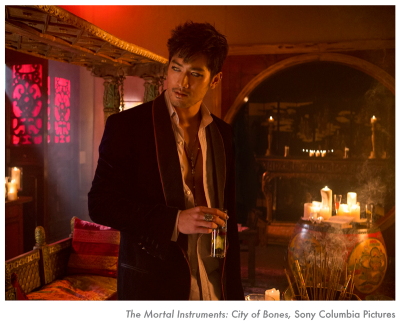Seeing more films pass the Vito Russo Test would be a great start, but as several of the films GLAAD tracked in 2013 prove, passing that test in no way guarantees a film won’t also be problematic or offensive in its portrayal of LGBT people. Here are some additional recommendations GLAAD has for Hollywood film to both improve depictions of LGBT people and stop repeating the same defamatory mistakes.
- Genre films like comic-book adaptations and action franchises are the areas where Hollywood film studios seem to commit the majority of their capital and promotional resources nowadays, but LGBT characters are still rarely seen in them. Especially given their global popularity, these films must become more diverse and inclusive.
- None of the LGBT characters that GLAAD counted in 2013 releases are considered “lead” characters, and there were only a few that had substantial supporting roles. In fact, many of these appearances were no more than a few seconds long, or just enough time to get to a punchline. As is still often said of Hollywood’s treatment of other marginalized groups, there need to be more substantial LGBT roles in film.
- Diversity in LGBT images continues to be an issue in nearly all forms of media, and film is no different. Not only should there be a greater number of substantial LGBT roles, those characters should be more gender-balanced, racially diverse, and from many backgrounds.
- There were no transgender characters in the 2012 releases GLAAD tracked, but the two found in the 2013 releases were hardly an improvement. One was a trans woman very briefly depicted in a jail cell, while the other was an outright defamatory depiction included purely to give the audience something to laugh at. Media representation of transgender people has long remained decades behind that of gay and lesbian people, and images like these continue to marginalize the community. However, recent media attention around trans issues and people like actress Laverne Cox demonstrates that times are changing, and Hollywood should as well.
- Anti-gay slurs are less common in film now than they were 20 years ago, but they are by no means extinct, and some are still used by characters the audience is meant to be rooting for. Perhaps even more prevalent are anti-transgender slurs, which in 2013 were used by main characters in films like Anchor Man 2 and Identity Thief for no reason other than to make a joke. With few exceptions, these words should be left on the cutting room floor.
The results: 20th Century Fox, Lionsgate, Paramount Pictures, Sony Columbia Pictures, Universal Pictures, Walt Disney Studios, Warner Brothers













